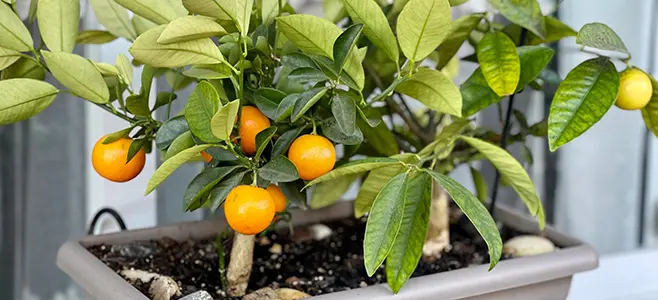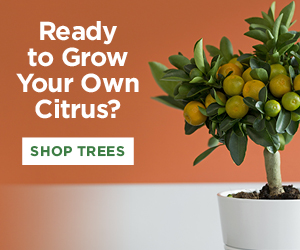
You’ve got a burning question: Is a calamondin (or calamansi) a kumquat? Wonder no further, because we’ve got a definitive answer for you! The answer is . . . kind of.
Okay, so we fibbed a little about having a definitive answer. A calamondin is actually a hybrid of a kumquat (and a mandarin orange, most likely a tangerine), but because the two share many similarities and due to taxonomy disputes over the years, it can often be difficult to distinguish between the two. We’ve made this handy chart to help you identify them.
| Calamondin | Kumquat | |
| Family-Genus-Species | Rutaceae – Citrus- Microcarpa | Rutaceae- Fortunella/Citrus-Japonica |
| *Calamondin and kumquat belong to the same family but are classified into different genera. Kumquat was considered part of the Citrus genus until 1915 when a new genus, Fortunella, was created by Robert Fortune, who introduced kumquats to Europeans. However, in the last few years, there have been more disputes about which genus kumquats belong to, with many scientists again placing them in the Citrus genus. So, you may come across the scientific name of kumquats as either Fortunella japonica OR Citrus japonica. Despite the name difference, they are both the common-named kumquat. | ||
| Origin | Most likely China or the Philippines (considered native in much of Southeast Asia) | Southeastern China |
| Size | Small, bushy evergreen trees that can grow 10-20 feet tall | Small, shrubby evergreen trees that can grow 8-15 feet tall |
| Leaves | Glossy, mid-green leaves that are small, oval, and densely packed | Glossy, dark green, spear-shaped leaves 1.25-3” in length |
| Flowers | Orange-scented flowers in the shape of white stars with yellow eyes | Small white flowers in clusters or single |
| Fruit – Size and Shape | Small and round, about the size of a ping-pong ball | Small and oval, about the size of a grape or olive |
| Fruit – Peel | Thin peel, orange when fully ripe, but usually picked when still green | Thin, orange-yellow peel |
| Fruit – Flesh | Orange color, segmented, few seeds | Orange color, segmented, somewhat dry, few seeds |
| Taste | Sour, tart, juicy, and slightly sweet | Citrusy taste with a sweet, tart, and tangy flavor profile |
| Uses | The flesh is edible, but its juice is better suited for use in things like beverages, sauces, and marinades. | Best eaten whole, like a grape |
Though the two species have their differences, when it comes to growing conditions, the two can be treated practically identically. Calamondin and kumquat trees are both adaptable, small trees that can tolerate frost and high humidity. They can both grow in a wide range of climates and are ideal for container culture. All you have to do is decide which one best suits your Yarden!

